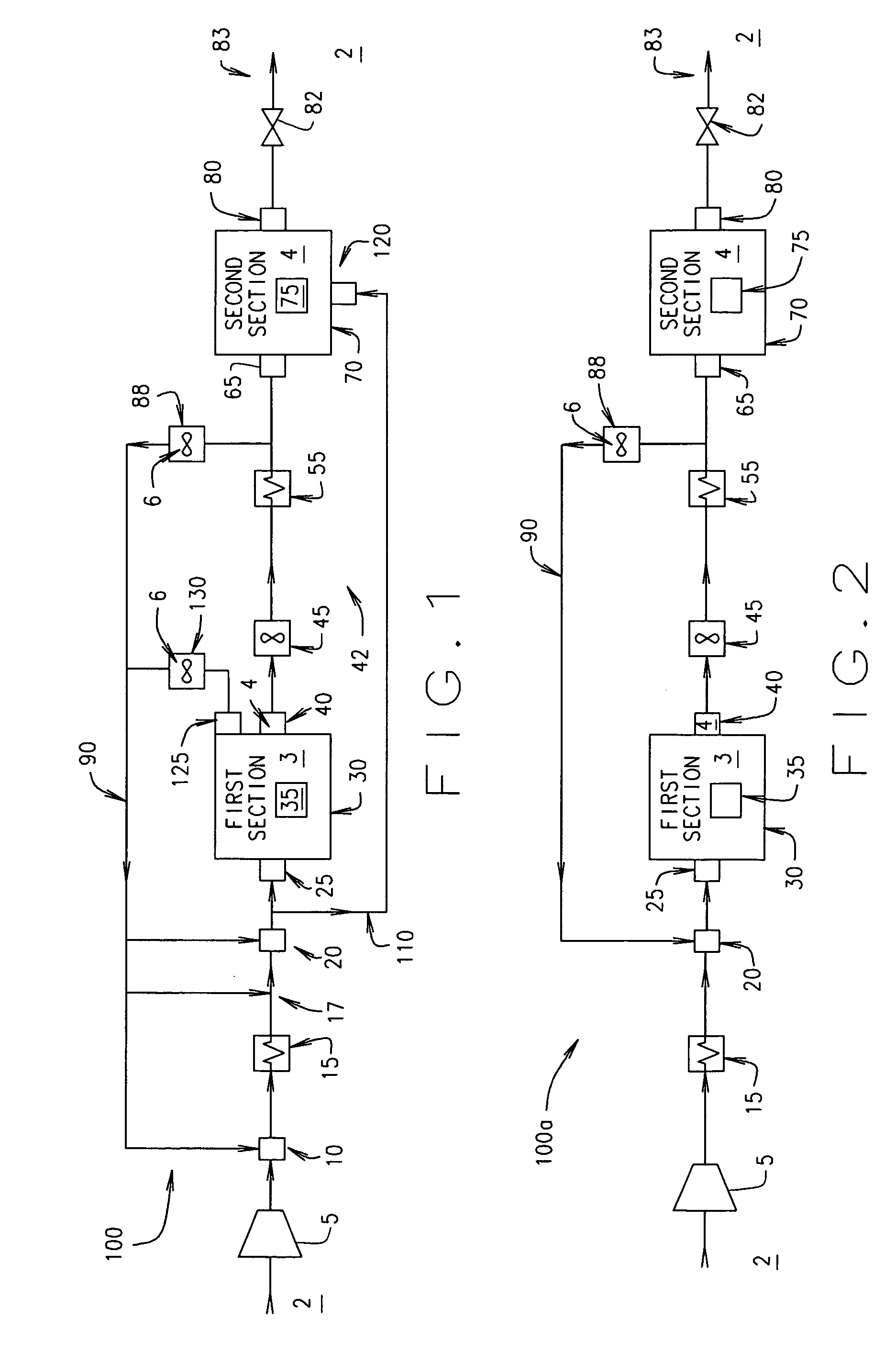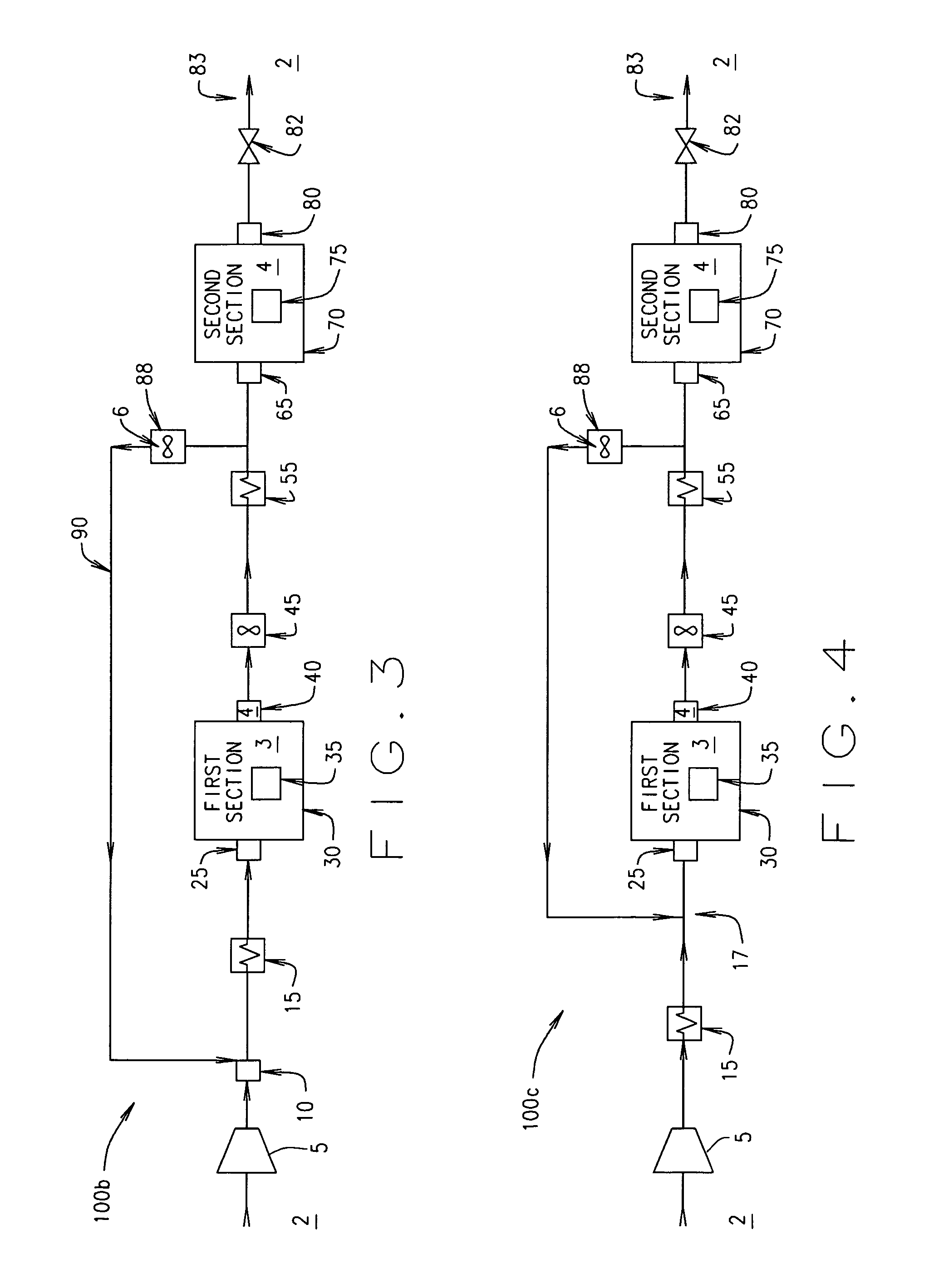High efficiency aircraft cabin air supply cooling system
a cooling system and high-efficiency technology, applied in the field of high-efficiency aircraft cabin air supply cooling system, can solve the problems of imposing the burden of compressing the outside, consuming enormous amounts of energy, and requiring a significant amount of energy to bring outside, so as to reduce the need for make-up air
- Summary
- Abstract
- Description
- Claims
- Application Information
AI Technical Summary
Benefits of technology
Problems solved by technology
Method used
Image
Examples
Embodiment Construction
[0034]The following description of the preferred embodiment(s) is merely exemplary in nature and is in no way intended to limit the invention, its application, or uses.
[0035]As noted, modern aircraft use conditioned outside air for many different purposes within the pressurized volume of the aircraft. Some examples of these uses include:[0036]a) Cabin, flight deck, crew rest, lavatory, and galley ventilation and temperature control for crew and passengers[0037]b) Flow to clear smoke from the flight deck[0038]c) Flow to prevent lower lobe smoke from penetrating into the cabin or flight deck[0039]d) Cargo compartment ventilation and temperature control for animals and perishables[0040]e) Equipment cooling
[0041]While the prior art treated these air conditioning needs without regard to whether the need represents a ventilation need or a temperature control need, the present invention makes the difference between these types of needs explicit. Generally, air conditioning encompasses both...
PUM
 Login to View More
Login to View More Abstract
Description
Claims
Application Information
 Login to View More
Login to View More - R&D
- Intellectual Property
- Life Sciences
- Materials
- Tech Scout
- Unparalleled Data Quality
- Higher Quality Content
- 60% Fewer Hallucinations
Browse by: Latest US Patents, China's latest patents, Technical Efficacy Thesaurus, Application Domain, Technology Topic, Popular Technical Reports.
© 2025 PatSnap. All rights reserved.Legal|Privacy policy|Modern Slavery Act Transparency Statement|Sitemap|About US| Contact US: help@patsnap.com



